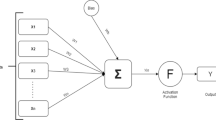Abstract
In the construction of enterprise financial risk prediction model, the obtaining of the optimal solution has a key impact on the prediction effect of the prediction model. Exploring the optimization and improvement of the prediction model to obtain the optimal solution is an urgent problem. In this paper, based on genetic algorithm and data mining technology, a genetic algorithm model based on adaptive improvement is proposed. Through linear adaptive optimization, the optimal solution of complex problems is obtained. When estimating parameters, EM algorithm is used to estimate, so that the final effect of model fusion can reach the expectation. At the same time, it integrates data mining technology, Borderline STATE EasyEnsemble sampling method and SVM intelligent technology to build an optimized comprehensive risk early warning model, which realizes the automatic integration and prediction of financial risks. The adjusted mathematical model is better than the single technical model. This study verified that the prediction ability of the improved model for minority samples has been greatly improved. Under the new method, F1 + F2 + F3 has increased by 14.83% compared with the single F1 feature, and the prediction accuracy of most types of samples has not been reduced. The prediction effect has generally improved. Finally, according to the current situation of enterprise finance, this paper puts forward effective measures to prevent enterprise financial risks.





Similar content being viewed by others
Data Availability
Data will be made available on request.
References
Andries AM, Galasan E (2020) Measuring financial contagion and spillover effects with a state-dependent sensitivity value-at-risk model. Risks 8(1):5
Bekhet HA, Eletter SFK (2014) Credit risk assessment model for Jordanian commercial banks: neural scoring approach. Rev Develop Finan 4(1):20–28
Gillet R, Hübner G, Plunus S (2010) Operational risk and reputation in the financial industry. J Bank Finance 34(1):224–235
Guo S, Liu Y, Chen R et al (2019) Improved SMOTE algorithm to deal with imbalanced activity classes in smart homes. Neural Process Lett 50(2):1503–1526
Haldurai L, Madhubala T, Rajalakshmi R (2016) A study on genetic algorithm and its applications. Int J Comput Sci Eng 4(10):139
Hatzakis ED, Nair SK, Pinedo M (2010) Operations in financial services—an overview. Prod Oper Manag 19(6):633–664
Kahle KM, Stulz RM (2013) Access to capital, investment, and the financial crisis. J Financ Econ 110(2):280–299
Li F, Wang Q, Tang Y et al (2021) An integrated method for critical clearing time prediction based on a model-driven and ensemble cost-sensitive data-driven scheme. Int J Electr Power Energy Syst 125:106513
Ma X, Lv S (2019) Financial credit risk prediction in internet finance driven by machine learning. Neural Comput Appl 31(12):8359–8367
Mehrafrooz Z, Noorossana R (2011) An integrated model based on statistical process control and maintenance. Comput Ind Eng 61(4):1245–1255
Mullard M (2012) The credit rating agencies and their contribution to the financial crisis. The Political Quarterly 83(1):77–95
Orlik NL (2015) Economic growth and financial instability: The ideas of Hayek and Keynes. J Rev on Global Econ 4:192–204
Pang S, Yang J (2020) Social reputation loss model and application to lost-linking borrowers in a internet financial platform. Peer-to-Peer Netw Appl 13(4):1193–1203
Rather AM, Agarwal A, Sastry VN (2015) Recurrent neural network and a hybrid model for prediction of stock returns. Expert Syst Appl 42(6):3234–3241
Saeed M, Izzeldin M (2016) Examining the relationship between default risk and efficiency in Islamic and conventional banks. J Econ Behav Organ 132:127–154
Sangaiah AK, Samuel OW, Li X, Abdel-Basset M, Wang H (2018) Towards an efficient risk assessment in software projects–Fuzzy reinforcement paradigm. Comput Electr Eng 71:833–846
Sangaiah AK, Hosseinabadi AAR, Shareh MB, Bozorgi Rad SY, Zolfagharian A, Chilamkurti N (2020) IoT resource allocation and optimization based on heuristic algorithm. Sensors 20(2):539
Shen PL, Li W, Wang XT et al (2015) Contagion effect of the European financial crisis on China’s stock markets: interdependence and pure contagion. Econ Model 50:193–199
Sylkin O, Kryshtanovych M, Zachepa A et al (2019) Modeling the process of applying anti-crisis management in the system of ensuring financial security of the enterprise. Verslas: Teorija ir praktika/Bus: TheoryPractice 20:446–455
Wang X, Huang F, Cheng Y (2014) Super-parameter selection for Gaussian-Kernel SVM based on outlier-resisting. Measurement 58:147–153
Zhang R, Tao J (2017) A nonlinear fuzzy neural network modeling approach using an improved genetic algorithm. IEEE Trans Industr Electron 65(7):5882–5892
Funding
The authors have not disclosed any funding.
Author information
Authors and Affiliations
Corresponding author
Ethics declarations
Conflict of interest
The authors declare that they have no conflict of interests.
Ethical approval
This article does not contain any studies with human participants performed by any of the authors.
Additional information
Publisher's Note
Springer Nature remains neutral with regard to jurisdictional claims in published maps and institutional affiliations.
Rights and permissions
Springer Nature or its licensor (e.g. a society or other partner) holds exclusive rights to this article under a publishing agreement with the author(s) or other rightsholder(s); author self-archiving of the accepted manuscript version of this article is solely governed by the terms of such publishing agreement and applicable law.
About this article
Cite this article
Yi, X. Application of data mining in enterprise financial risk prediction based on genetic algorithm and linear adaptive optimization. Soft Comput 27, 10305–10315 (2023). https://doi.org/10.1007/s00500-023-08308-4
Accepted:
Published:
Issue Date:
DOI: https://doi.org/10.1007/s00500-023-08308-4




